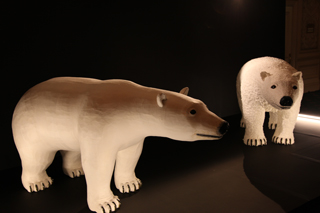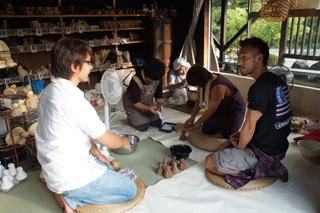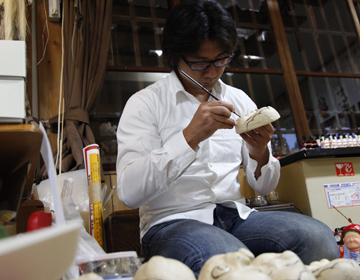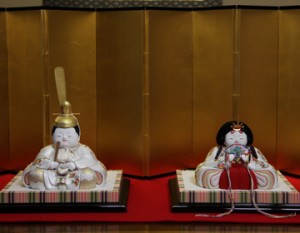Decorative dolls made with Japanese paper
Shoichi Hashimoto, Miharu Hariko doll artist, participated in the 2011 REVALUE NIPPON PROJECT as well. He and his team were responsible for creating the piece that was very popular at the TAKE ACTION CHARITY GALA 2011, the big polar bear.
It was a gigantic polar bear more than 2 meters in height. What was it made of?, one might ask. It was made with ”washi”. It was made using a method of paper mache where layers of ”washi” are bonded to a wooden cast.
Miharu Hariko dolls are referred to as ”deco doll” by the Fukushima locals. It is said to have begun about 300 years ago in Edo Genroku period, when hariko doll making arrived from Kyoto. The word ”deco” came from the Japanese word for papier mache ”hariko”. Hashimoto is the 21st head of Deco House Oguroya. After teaching art, he succeeded his family business as a deco doll maker. He is an artist who challenges new things while carrying on the tradition.

Deco house where many craftsmen gather.
Hashimoto’s shop and atelier are located between the mountains in Koriyama City, in a village with beautiful nature. It was once a artisan village, protected by the Miharu clan. Presently, there are 4 deco doll houses lining the village, including Hashimoto’s Oguroya.
”Deco doll are all handmade and can not be mass produced. I think that is good. I would like people to actually come here, take in the relaxing air. I think this environment is part of the deco doll’s appeal.”
Our visit coincided with the peak season for creating the 2013 zodiac dolls, the snake. Many artisans were bonding Japanese papers to the wooden cast, finishing up the dolls.

Special techniques for making deco dolls
Deco doll making at Oguroya involves division of labor. Hashimoto is the only one who can make the wooden mold. Special technique is required to make the traditional mold. He told us that he remembers a lot from having watched his grandfather make the molds when he was a child. He then brought a wooden mold and paper, looked at Nakata and said, ”Please give it a try.”
Nakata, born in the year of the snake, tries doll making
Nakata began immediately. As expected, he chose the snake as the theme. He applied the wet ”washi” on the wooden mold as he stretched the paper, trying to avoid any wrinkles. The ”washi” was stronger than expected. It didn’t rip even if he pulled on it tightly.
”You are good. I can tell you are good with your hands. To tell you the truth, the snake is a hard one to make.” Hashimoto complimented. Upon hearing the compliment, Nakata made a request.
”I was born in the year of the snake. So please make it great, my snake!”
”OK, let’s make a 2 meter long snake!”
”Can we make it a little smaller…?” (laughing)
Nakata’s task ends at ”paper pasting”. After that, the wooden mold is dried, the ”washi” is cut to remove the wooden mold, then once again, the ”washi” is put back together, shaped, and painted. By actually touching it, we were able to experience the strength of ”washi” as a material.






